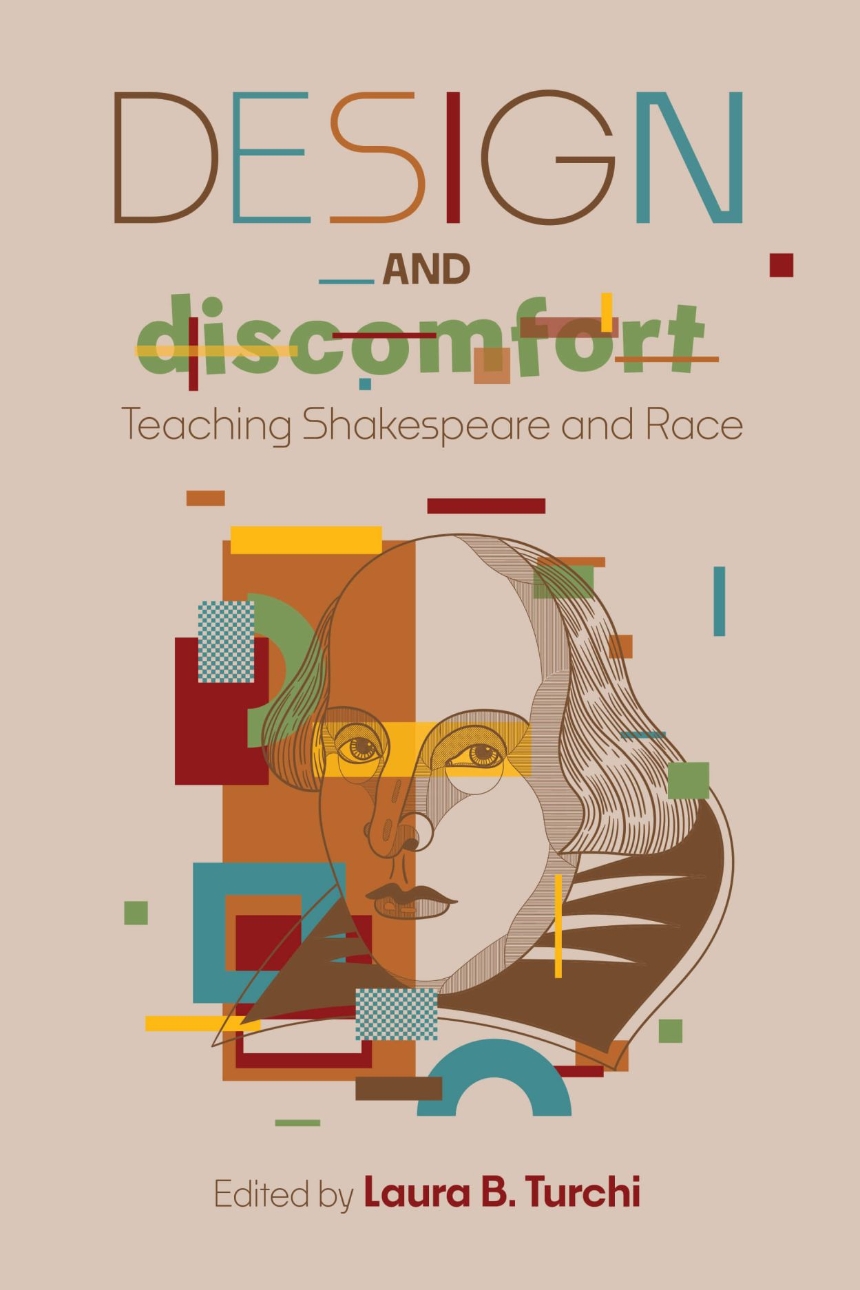What does it mean to teach Shakespeare in a world reckoning with racism and injustice? Explore new and innovative strategies for transforming discomfort into dialogue.
Design and Discomfort confronts the complexities of teaching Shakespeare in today’s classrooms, where discussions of race, bias, and historical legacies can provoke discomfort—but also transformation. Edited by Laura B. Turchi, this collection brings together educators and teaching artists who share innovative strategies for rethinking Shakespeare’s role in education.
Rather than treating Shakespeare as an untouchable authority, the contributors explore how his works can be a springboard for broader conversations about identity and justice. They advocate for performance-based and student-driven approaches that help students see themselves—their communities, their families, and their lived experiences—in the complex and seemingly distant world of Shakespeare.
This open-access volume provides both conceptual essays and practical lesson designs for educators navigating the intersections of Shakespeare and race. By embracing discomfort as part of the learning process, Design and Discomfort reframes how Shakespeare should be taught in classrooms today.
Design and Discomfort confronts the complexities of teaching Shakespeare in today’s classrooms, where discussions of race, bias, and historical legacies can provoke discomfort—but also transformation. Edited by Laura B. Turchi, this collection brings together educators and teaching artists who share innovative strategies for rethinking Shakespeare’s role in education.
Rather than treating Shakespeare as an untouchable authority, the contributors explore how his works can be a springboard for broader conversations about identity and justice. They advocate for performance-based and student-driven approaches that help students see themselves—their communities, their families, and their lived experiences—in the complex and seemingly distant world of Shakespeare.
This open-access volume provides both conceptual essays and practical lesson designs for educators navigating the intersections of Shakespeare and race. By embracing discomfort as part of the learning process, Design and Discomfort reframes how Shakespeare should be taught in classrooms today.
330 pages | 6 x 9 | © 2025
Education: Comparative Education
Literature and Literary Criticism: British and Irish Literature, Dramatic Works
Table of Contents
Introduction (by Laura B. Turchi)
1. Building Community in an Anti-Racist Shakespeare Classroom (by Mary Jannel Metzger)
2. Infusing Race and Other Identity Markers in Secondary-Classroom Study of Shakespeare: A Framework for Design of K–12 / Teacher Education Instruction (by Steven Z. Athanases, Julia G. Houk, Sergio L. Sanches, and Ofir L. Calahan)
3. Teaching Shakespeare Here and Now, For Real: Lessons from the Folger Shakespeare Library and from Folger Classrooms (by Noelle Cammon, Peggy O’Brien, and Corinne Viglietta)
4. Yes, We Can: Decentering Shakespeare in Our Classrooms (by Marilyn J. Halperin)
5. Building Community on a Foundation of Shakespeare: Two Teaching Artists in Conversation (by Chris Anthony and Peter Howard)
6. An Honest Tale (by Kristine Wilber)
7. Empowered on the Road to Empowering: A Latina English Teacher’s Reflection on Teaching Shakespeare (by Melina Lesus)
8. Many Stories at Once: On Teaching Shakespeare Within a Framework of Polyphonic Discomfort (by Sasha A. J. Maseelall)
9. ReVerse: Poetry in the Shakespeare Classroom (by Kathryn Vomero Santos and Jesus Montaño)
10. Using Caste to Talk about Difference (by Current Ann Christensen)
11. Casting and the Classroom: Introducing Students to the Semiotics of Race in Performance (by Ofir L. Cahalan)
12. Exploring Race and Gender through Selected Excerpts from Shakespeare: Spiraling Upward from the Elementary Grades (by Sergio L. Sanchez and Jaclynn Kiikvee)
13. “Where do you go and how do you come back?”: An Exploration of Socially Constructed Knowing through Multimodal Transmediation (by Julia G. Houk)
14. Talking Back to the Bard through Words, Visuals, Gestures, and Sounds: Multimodal Assignments that Honor Students’ Voices and Cultures (by Wendy R. Williams)
1. Building Community in an Anti-Racist Shakespeare Classroom (by Mary Jannel Metzger)
2. Infusing Race and Other Identity Markers in Secondary-Classroom Study of Shakespeare: A Framework for Design of K–12 / Teacher Education Instruction (by Steven Z. Athanases, Julia G. Houk, Sergio L. Sanches, and Ofir L. Calahan)
3. Teaching Shakespeare Here and Now, For Real: Lessons from the Folger Shakespeare Library and from Folger Classrooms (by Noelle Cammon, Peggy O’Brien, and Corinne Viglietta)
4. Yes, We Can: Decentering Shakespeare in Our Classrooms (by Marilyn J. Halperin)
5. Building Community on a Foundation of Shakespeare: Two Teaching Artists in Conversation (by Chris Anthony and Peter Howard)
6. An Honest Tale (by Kristine Wilber)
7. Empowered on the Road to Empowering: A Latina English Teacher’s Reflection on Teaching Shakespeare (by Melina Lesus)
8. Many Stories at Once: On Teaching Shakespeare Within a Framework of Polyphonic Discomfort (by Sasha A. J. Maseelall)
9. ReVerse: Poetry in the Shakespeare Classroom (by Kathryn Vomero Santos and Jesus Montaño)
10. Using Caste to Talk about Difference (by Current Ann Christensen)
11. Casting and the Classroom: Introducing Students to the Semiotics of Race in Performance (by Ofir L. Cahalan)
12. Exploring Race and Gender through Selected Excerpts from Shakespeare: Spiraling Upward from the Elementary Grades (by Sergio L. Sanchez and Jaclynn Kiikvee)
13. “Where do you go and how do you come back?”: An Exploration of Socially Constructed Knowing through Multimodal Transmediation (by Julia G. Houk)
14. Talking Back to the Bard through Words, Visuals, Gestures, and Sounds: Multimodal Assignments that Honor Students’ Voices and Cultures (by Wendy R. Williams)

